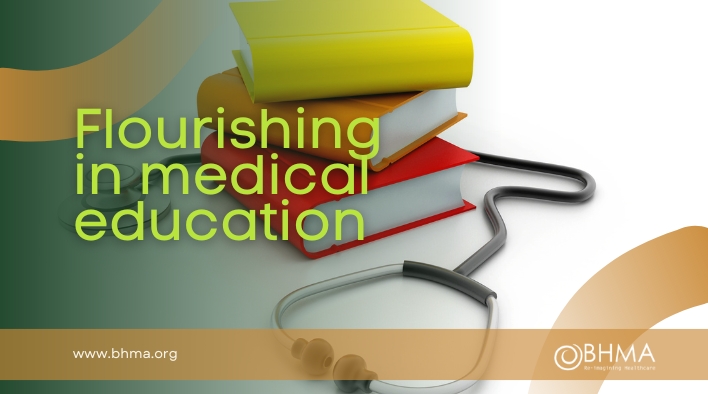Flourishing in medical education
Ben Rose, Medical student intercalating at University of Bristo
Published in JHH18.1 – Flourishing in Medical Education
I am studying for a BA in medical humanities at the University of Bristol. I have completed four years of medicine at the University of Liverpool and needed to take a break and explore subjects I have always wanted to study in further education – and I cannot recommend it enough. If you are feeling lost, or wanting to pursue a non-traditional medical career path, then intercalating in a subject that is purely for interest reasons is a great decision – there is a lot more out there that we don’t come across in traditional medical education.
Ever since wanting to embark on a medical degree, I have felt disconnected from my creative self. Time has been occupied with rote-learning and exhaustion, leaving little room to express myself creatively. Consequently, I found myself at a level of burnout where I was losing interest in my medical degree, and going through the motions of placement, all-consuming exams and feeling I would not be able to jump off the conveyer belt of doctor production.
I decided to take a risk and intercalate (study a different subject) in medical humanities (iBAMH). By allowing myself time to explore the parts of myself that have felt completely neglected, I have found peace in its restorative process. By being able to critically analyse medical practice through a philosophical and literary lens, I have been given the chance to take a step back and reflect on my experiences and process the complexities that come with pursuing a career in healthcare. In a time of great socio[1]political change and devastation from the global pandemic, many keyworkers and healthcare students are experiencing emotional and physical exhaustion (Lasalvia et al, 2021). My experience has made me wonder whether incorporating the arts and humanities into medical education would provide some of the inner resources that will help us flourish in an ever more demanding world.
During my intercalated degree, we have had opportunities to actively engage in creativity-based workshops and talk about themes, or pieces of art that resonate with our experiences as medical students. As a result, I have created this piece of work to embody my feelings of dissociation between my creative and my scientific selves. I used a kaleidoscope lens to take a self[1]portrait, and then I embarked on recreating myself with watercolour and pens. Through this effect, I was able to display the disconnect I had been feeling inwardly, creating a disjointed external appearance. I usually use reference pictures I have taken of other people or places I have been as a starting point when deciding to create. I rarely, if ever, use myself as a reference, so it was interesting to see myself close up in this chaotic style. Overall, I wanted to explore how, although seemingly divided in modern[1]day healthcare, art and medicine actually stem from branches of the same tree. Meaning, I wanted to connect what previously felt divided in my life.
Despite feeling this disconnect with my own experience in medical practice, art has been intricately intertwined with healthcare over the centuries. Medical illustration first appears in Hellenic Alexandria during 3rd century BC; the Renaissance brought forth dissection and famous anatomist artists. There are plenty of examples of the close bond between the two disciplines: we can arguably see art forms in different areas of medical practice, from anatomy teaching, to radiography interpretations, and surgical techniques. Interestingly, it has been suggested that the qualities of an individual exploring medicine or art are very similar, and there is a close link between artistic creativity and doctors. This has been called the medico-artistic phenomenon, where creativity arises from an intellectual energy (Weisz & Albury, 2010). Nonetheless, in modern-day society there still seems to be a huge institutional divide between the sectors, with the healthcare community rarely actively engaging in both.
I think it is important not to take what one creates too seriously and to accept the imperfection of the results. Like many medical students I have struggled with the impulse to achieve perfection, and I don’t always embrace the natural shortcomings of being human. I am sure I will continue struggling with these challenges throughout my career, especially when taking exams. However, when I do embrace the flaws in something I have created, I can still be proud of the overall result. This has been an important lesson for me when I feel myself falling short of perfection: that I can take pride in my accomplishments and appreciate the fruits of my hard work.
References
- Lasalvia A, Amadde F, Porru S, Carta A, Tardivo S, Bovo C, Ruggeri M & Bonetto C (2021) Levels of burn-out among healthcare workers during the COVID-19 pandemic and their associated factors: a cross-sectional study in a tertiary hospi[1]tal of a highly burdened area of north-east Italy. BMJ Open, 11(1) e045127.
- Weisz GM, Albury WR (2010) The medico-artistic phenomenon and its implications for medical education. Medical Hypotheses, 74(1) 169–73







